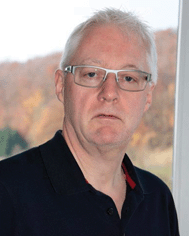Celebrating the 100th Anniversary of the Nobel Prize in Chemistry awarded to Alfred Werner†
Edwin C. Constablea and Philip A. Galeb
aDepartment of Chemistry, University of Basel, Spitalstrasse 51, CH 4056 Basel, Switzerland. E-mail: edwin.constable@unibas.ch
bChemistry, University of Southampton, Southampton SO17 1BJ, UK. E-mail: philip.gale@soton.ac.uk
 Edwin C. Constable, Guest Editor |
 Philip A. Gale, Associate Editor, supramolecular, macrocyclic and coordination chemistry, and Guest Editor |
The year 2013 marks the 100th Anniversary of the award of the Nobel Prize in Chemistry to Alfred Werner “in recognition of his work on the linkage of atoms in molecules by which he has thrown new light on earlier investigations and opened up new fields of research especially in inorganic chemistry”. This was the first Nobel Prize awarded in the field of inorganic chemistry. Werner's work on coordination chemistry laid the foundations of broad areas of modern chemistry including catalysis, supramolecular chemistry and nanotechnology, bioinorganic chemistry, metal-based pharmaceuticals and metal–organic frameworks. In this themed issue of Chemical Society Reviews we cover coordination chemistry in its widest sense including areas that would not have been recognised as such 100 years ago.
Nobel Laureate Alfred Werner
This themed issue consists of a mix of review articles, tutorial reviews and a critical review. To start this themed issue, Edwin Constable and Catherine Housecroft (DOI: 10.1039/C2CS35428D) discuss the scientific legacy of Alfred Werner and show how his contributions continue to dominate coordination chemistry. This is followed by an article from Oana Luca and Robert Crabtree (DOI: 10.1039/C2CS35228A) on redox-active ligands in catalysis focussing on odd electron redox-active ligands. Sophie Benjamin, William Levason and Gillian Reid (DOI: 10.1039/C2CS35263J) discuss medium and high oxidation state metal/non-metal fluoride and oxide fluoride complexes with neutral donor ligands in their review and Robert Hancock (DOI: 10.1039/C2CS35224A) then discusses the pyridyl group in ligand design for selective metal ion complexation and sensing. This is followed by a review from Eugenio Coronado and Guillermo Mínguez Espallargas (DOI: 10.1039/C2CS35278H) on dynamic magnetic metal–organic frameworks. Anthony Yiu-Yan Tam and Vivian Wing-Wah Yam (DOI: 10.1039/C2CS35354G) then cover recent advances in metallogel chemistry in their review. Zhipeng Liu, Weijiang He and editorial board member Zijian Guo (DOI: 10.1039/C2CS35363F) discuss the role of metal coordination in fluorescent and luminescent sensing, followed by an overview of 1,8-naphthalimide-based DNA targeting binders, anticancer and fluorescent cellular imaging agents from Swagata Banerjee, Emma Veale, Caroline Phelan, Samantha Murphy, Gillian Tocci, Lisa Gillespie, Daniel Frimannsson, John Kelly and Thorfinnur Gunnlaugsson (DOI: 10.1039/C2CS35467E).
In the first tutorial review in the themed issue Michael Ward and Paul Raithby (DOI: 10.1039/C2CS35123D) discuss functional behavior from controlled self-assembly which is followed by a tutorial review from Edwin Constable (DOI: 10.1039/C2CS35270B) on stereogenic metal centres that traces the link from Werner to modern supramolecular chemistry. There follows a tutorial from Stephen Butler and David Parker (DOI: 10.1039/C2CS35144G) on anion binding in water at lanthanide centres and the theme of anion binding is continued by Thomas Beale, Michael Chudzinski, Mohammed Sarwar and Mark Taylor (DOI: 10.1039/C2CS35213C) in their tutorial review of halogen bonding in solution and by Luigi Fabbrizzi and Antonio Poggi (DOI: 10.1039/C2CS35290G) in their tutorial review on anion recognition by coordinative interactions. Jean-François Ayme, Jonathon Beves, Christopher Campbell and David Leigh (DOI: 10.1039/C2CS35229J) discuss the template synthesis of molecular knots in their tutorial that is followed by a tutorial from Leonard Lindoy, Ki-Min Park and Shim Sung Lee (DOI: 10.1039/C2CS35218D) on macrocyclic complexes in metallosupramolecular chemistry. Maarten Smulders, Imogen Riddell, Colm Browne and Jonathan Nitschke (DOI: 10.1039/C2CS35254K) discuss architectural principles for three-dimensional metallosupramolecular construction in their tutorial which is followed by an overview of solid state reactivity and structural transformations involving coordination polymers from Goutam Kumar Kole and Jagadese Vittal (DOI: 10.1039/C2CS35234F). In his tutorial review Jan Reedijk (DOI: 10.1039/C2CS35239G) looks at the interplay between hydrogen bonding and coordination whilst Malcolm Halcrow (DOI: 10.1039/C2CS35253B) looks at Jahn–Teller distortions in transition metal compounds and the importance of these distortions in functional molecular and inorganic materials. Grigore Timco, Eric McInnes and Richard Winpenny (DOI: 10.1039/C2CS35232J) discuss physical studies of heterometallic rings in the context of studying magnetically coupled systems in their tutorial review which is followed by a tutorial review from Hoi Ri Moon, Dae-Woon Lim and Myunghyun Paik Suh (DOI: 10.1039/C2CS35320B) on the fabrication of nanoparticles in metal–organic frameworks. Satoshi Shinoda (DOI: 10.1039/C2CS35295H) discusses dynamic cyclen–metal complexes for molecular sensing and chirality signaling in his tutorial review which is followed by an overview of how coordination chemistry is related to neurodegeneration and treatment of these types of conditions by Maria Telpoukhovskaia and advisory board member Chris Orvig (DOI: 10.1039/C2CS35236B). Peter Frischmann, Kingsuk Mahata and Frank Würthner (DOI: 10.1039/C2CS35223K) discuss metallosupramolecular dye assemblies and artificial photosynthesis in their tutorial review. Finally Olaf Fuhr, Stefanie Dehnen and Dieter Fenske (DOI: 10.1039/C2CS35252D) discuss chalcogenide clusters of copper and silver from silylated chalcogenide sources in a critical review.
We hope you enjoy reading the articles in this themed issue. The breadth of areas in which coordination chemistry plays a pivotal role highlights the importance of Werner's contributions to chemistry.
Footnote |
| † Part of the centenary issue to celebrate the Nobel Prize in Chemistry awarded to Alfred Werner. |
| This journal is © The Royal Society of Chemistry 2013 |

